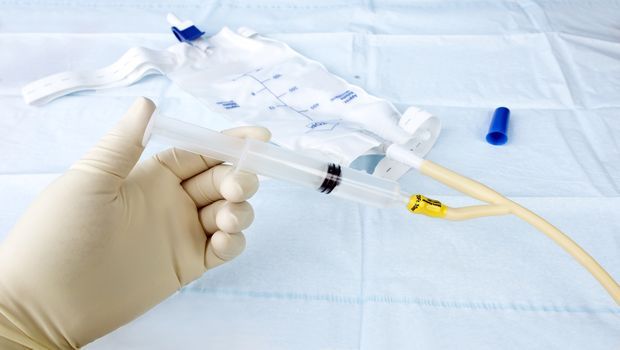Study Shows 54 Percent Drop in CAUTIs Among Nursing Home Residents


Rates of catheter-associated urinary tract infections (CAUTIs) dropped by 54 percent across more than 400 long-term care facilities that participated in a patient safety project funded by the Agency for Healthcare Research and Quality (AHRQ), according to a study published in JAMA Internal Medicine.
The project adapted AHRQ’s Comprehensive Unit-based Safety Program (CUSP) for use in long-term care facilities. Data from nursing homes in 38 states were included in the new analysis. Previous AHRQ efforts to implement CUSP and other safety programs in hospitals have led to significant reductions in CAUTIs and bloodstream infections associated with central line catheters.
“We continue to see the power of AHRQ tools to help front-line staff tackle safety problems, now in nursing homes as well as hospitals,” said Jeffrey Brady, MD, MPH, director of AHRQ’s Center for Quality Improvement and Patient Safety. “This means that some of the most vulnerable members of society – those who reside in long-term care facilities and nursing homes – are less likely to be harmed as a result of infections.”
CAUTI is a type of healthcare-associated infection (HAI) that is common in long-term care facilities, where up to 10 percent of residents have urinary catheters. CAUTI can sometimes lead to severe illness and hospitalization and generates significant expenses for antibiotics and hospitalizations. The infections are generally treatable with antibiotics, but long-term or repeated use of antibiotics can increase the risk of other infections as well as lead to development of antibiotic resistance.
CUSP is designed to promote improvement in leadership, teamwork, communication and safety culture to facilitate consistent use of evidence-based practices for infection prevention. During the project, CAUTI rates dropped from about 6.4 to 3.3 per 1,000 catheter days. Three-quarters of the facilities showed a CAUTI rate reduction of at least 40 percent, indicating that this approach could benefit a majority of long-term care facilities.
Researchers also found that orders for urine cultures – tests to find germs in the urine – decreased by 15 percent during the study period. Best practices encouraged in the project included avoiding urine cultures for most patients without symptoms.
“This project is an example of translating research into practice using innovative implementation strategies and by empowering front-line teams,” said Lona Mody, MD, of the University of Michigan and VA Ann Arbor Healthcare System, lead author of the study.
The study of CAUTI-prevention strategies was part of a multiyear national implementation project. The reductions took place during rolling 12-month periods from 2014 to 2016 in participating community-based nursing homes. Funded by AHRQ, the contract was led by the Health Research & Educational Trust of the American Hospital Association and a team of partners.
"This project was much more than just learning about urine cultures, antibiotics and catheters," said Amanda Calhoun, RN, assistant director of nurses and CAUTI team leader at Belle View Estates Rehabilitation and Care Center, one of the facilities that participated in the project. “It gave me the confidence to help improve the care of the people in our community.”
To help doctors, nurses and other leaders in all long-term care facilities prevent CAUTIs, AHRQ has released a Toolkit to Reduce CAUTIs and Other HAIs in Long-Term Care Facilities. This practical resource is based on the experiences of facilities that participated in the project. It includes checklists and other tools and educational materials to guide facilities that seek to apply infection-reduction programs.
Source: AHRQ
Uncovering a Hidden Risk: Alcohol Use Disorder Significantly Increases C difficile Infection Rates
April 10th 2025A groundbreaking study reveals a strong connection between alcohol use disorder and increased risk for Clostridioides difficile infection, challenging traditional assumptions and calling for enhanced infection prevention protocols.